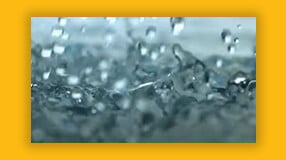Dissipation Factor - Definition, Measurement, Variables

Dielectric materials are crucial in various industries and applications, serving as insulators, substrates, or capacitors. One important characteristic often evaluated in dielectric materials is their dissipation factor. The dissipation factor, also known as the loss tangent or tan δ, is a vital parameter that measures the dielectric losses in electrical systems and components. It quantifies the energy dissipated as heat when an alternating current (AC) signal passes through an insulating material or a capacitor.
Why is Dissipation Factor Important?
This property provides valuable insight into the performance of dielectric materials. It measures the efficiency with which a dielectric material dissipates energy in the form of heat when subjected to an alternating current (AC) or high-frequency signal.
By analyzing this value, engineers can detect potential issues such as insulation breakdown, heat generation, and power loss, enabling them to effectively design and optimize electrical systems. Whether in high-frequency applications, power electronics, or telecommunications, the dissipation factor assists in selecting the appropriate materials, reducing energy loss, and enhancing electrical equipment's overall efficiency.
A high dissipation factor can indicate potential problems such as inefficient energy transfer or excessive heat generation in dielectric materials. By assessing this data, engineers can determine if a material is suitable for a specific application or needs replacing.
Measurement Techniques
The dissipation factor is calculated by dividing the loss tangent of a dielectric material by its capacitance. The loss tangent is the ratio of the dissipated power to the stored energy in the material. There are several ways to determine the dissipation factor of various materials accurately. Professionals can use these techniques to obtain precise data and evaluate the performance and reliability of materials.
Bridge Method
The bridge method is a common measurement technique. It uses a bridge circuit consisting of resistors, capacitors, and inductors. By balancing the bridge, engineers can determine the material's dissipation factor under test.
Parallel-Plate Method
The parallel-plate method is another popular technique. It involves placing the material between two parallel plates and applying an alternating voltage across them. The dissipation factor is determined by measuring the power loss in the material.
Guard-Ring Method
The guard-ring method is a technique that minimizes the effects of stray capacitance during measurement. It involves placing a guard ring around the measurement electrodes to prevent current leakage due to the stray capacitance. This method helps to improve accuracy.
Variables Affecting Dissipation Factor
Several factors can influence the dissipation factor, affecting the efficiency and performance of electrical systems. Engineers and designers can optimize electrical systems by understanding and considering these factors, ensuring efficient and reliable operation.
Temperature
Temperature plays a significant role. As the temperature increases, molecular motion and energy losses increase, leading to a higher value. It is important to consider the temperature range in which a material will be used to ensure its dissipation factor remains within acceptable limits.
Dielectric Loss
Dielectric loss refers to the energy lost as heat due to the interaction between the electric field and the dielectric material. Materials with higher dielectric losses tend to have higher dissipation factors. Selecting materials with low dielectric loss can help minimize dissipation and improve system performance.
Frequency of Operation
The frequency of operation has a direct impact. At higher frequencies, the energy losses from the materials increase significantly, leading to an increased value. It is essential to consider the operating frequency when evaluating the dissipation factor of materials for electrical systems.
Resistance in the Circuit
The resistance in the circuit also contributes to the dissipation factor. Higher resistance causes larger energy losses and a greater value. Minimizing resistance through proper circuit design and selecting low-resistance components can help reduce the overall dissipation factor.
Material Selection
The dissipation factor provides valuable insights into the electrical behavior of components, enabling manufacturers to make informed decisions regarding their application in different industries. This value is relevant across various industries heavily relying on electrical components. Industries such as telecommunications, power generation, aerospace, and automotive require strict adherence to quality standards to ensure optimal performance and safety.
Engineers can compare materials' performance at high frequencies by evaluating this property. This evaluation allows them to select materials with lower dissipation factors, which result in reduced energy losses and improved system efficiency. Furthermore, optimizing this property can also lead to increased power handling capabilities and improved reliability. If you are designing an electronic product and need help selecting a protective coating with beneficial electrical properties, please contact our team for a consultation. Or, you can learn more about thin film coating properties.
What is the Index of Refraction? Measurement, Definition & More
Arc Resistance - Concepts and Testing Explained
What is Thermal Conductivity? Explanation, Measurement, Uses
Mallory is a veteran writer with over a decade of writing experience and has spent over five years at HZO learning about coating technology from the best minds in the industry. Professionally, Mallory is especially interested in the process of problem-solving and watching how the engineering team develops solutions that ensure business requirements are met. Over her years at HZO, Mallory's writing has been cited in industry whitepapers, including "Parabolic Model for Optimum Dry Film Thickness (DFT) of Corrosion Protective Coatings" and "Universal Approach to Integrating Reduced Graphene Oxide into Polymer Electronics." All of Mallory’s blogs are reviewed for accuracy before publication.
Additional Resources

Understand the Capabilities of Thin Film Coatings With Our Resource Page

Understand UL94 Rating - Testing, How to Choose a Material, and More

What's the Difference Between Hydrophobic Coatings and Hydrophilic Coatings?

Dielectric Constant of Insulator - Materials, Formula, Table of Values

Tensile Strength at Yield - Testing, Definition, Material Selection

Young's Modulus of Polymers - Measurement, Calculation, Material Selection

Volume Resistivity - Definition, Measurement, Implications For Product Design

Polymer Glass Transition Temperature – Material Properties, Impact

What is Coefficient of Linear Expansion? Formula, Units & More

Learn About the Thin Film Coating Properties and Processes In Our Webinar

The Difference Between "Hydrophilic and Hydrophobic" Coating Properties

Learn about Protective Coating Methodologies With Our White Paper























